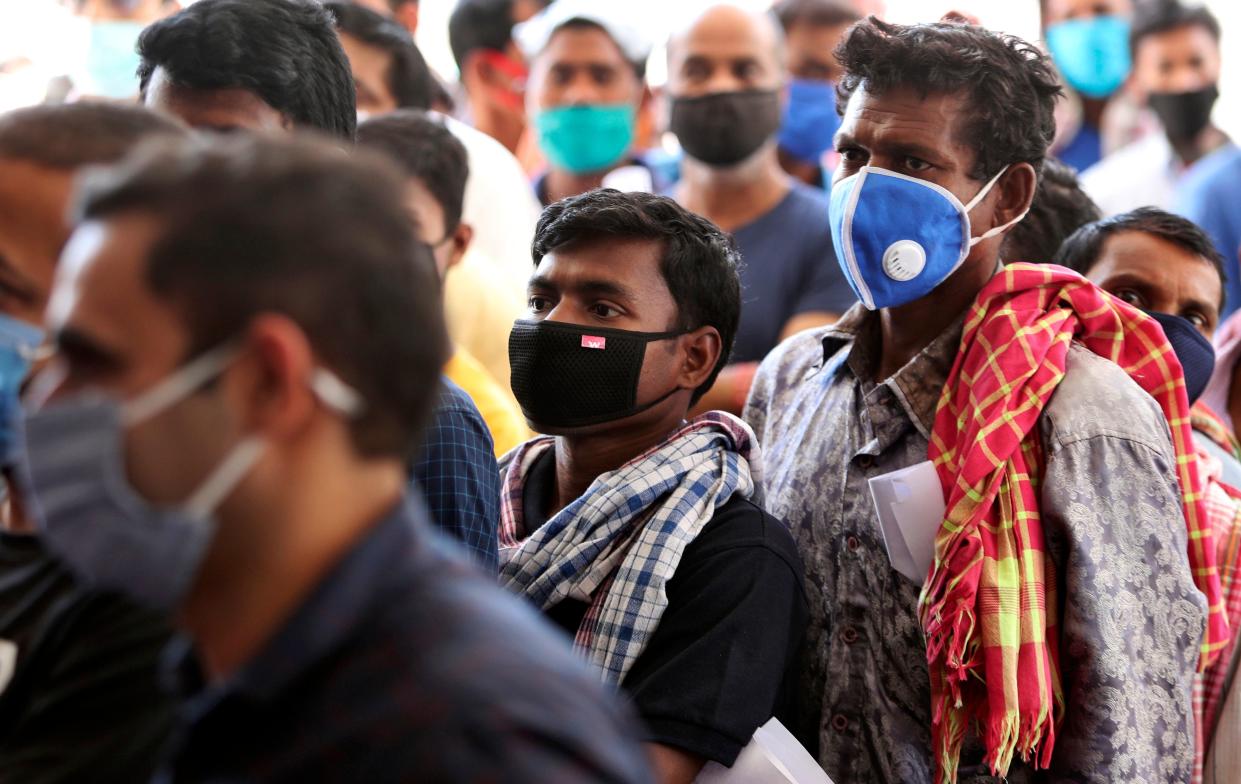What does India’s addition to the red list mean for travel?

India has been added to the UK’s travel “red list”, health secretary Matt Hancock has announced, as a new Covid-19 variant in the country is causing infections to rise.
Matt Hancock told the Commons on Monday that the decision had been made “after studying the data, and on a precautionary basis”.
It comes as the prime minister cancelled a trade trip to India next week.
Here’s what India’s inclusion on the red list means for travel.
The rule comes into force at 4am on Friday.
Is it a travel ban?
No, even though some media reports that that is what being on the red list involves. UK or Irish residents, or British citizens, can enter the UK if they have been in India in the previous 10 days, but they will need to go into hotel quarantine for 11 nights.
Other citizens will not be able to travel to the UK, but they are only a small fraction of the numbers typically arriving at present.
What does hotel quarantine involve?
The cost is £1,750 for a solo traveller, with reductions for two or more people. This includes the cost of mandatory PCR tests on days two and eight of quarantine.
Although the government says hotel quarantine is for “10 days,” in fact it is for 11 nights and involves 12 days: the day of arrival (day zero), 10 full days in a hotel room, and the day of release.
Why has India been added to the red list?
This new variant, the B.1.617 strain, has been linked to a dramatic surge in infections which is wreaking havoc across India, with evidence it may be capable of evading antibodies and T-cells.
India reported 273,810 new infections on Monday, its highest daily rise since the start of the pandemic. Deaths rose a record 1,619 to 178,769.
New Delhi is now under a strict week-long lockdown in an attempt to curb rising infections and protect the health system.
But Dr Susan Hopkins, the chief medical adviser for NHS Test and Trace, previously said there is not yet enough data to classify the new Indian strain as a “variant of concern”. It is instead a “variant of interest”, which is being monitored closely.
Which countries are on the red list?
There are currently 40 nations on the “red list”, which includes countries such as the United Arab Emirates, most of South America and South Africa. The red list is fluid and countries are designed to be added and taken off depending on infection rates and the risk of any new variants.
Prior to India’s inclusion on 19 April, the most recent shuffle on 9 April added Bangladesh, Kenya, the Philippines and Pakistan.
What has the government said about India’s inclusion on the red list?
There are close economic, diplomatic and social ties between the UK and India; and the impact of the addition of the country will be extensive: there are more than 1.3 billion people living in India.
Mr Hancock added: “Mr Speaker, India is a country, I know well, and love. Between our two countries we have ties of friendship and family. I understand the impact of this decision, but I hope that the House will concur that we must act because we must protect the progress that we’ve made in this country, in tackling this awful disease.”
What are the present links from India to the UK?
There are currently a handful of flights from Indian cities including capital Delhi, Bengaluru, Mumbai and Hyderabad arriving into the UK each day, mainly to London Heathrow on British Airways and the Indian airlines Vistara and Air India.
Is there any warning?
Yes. The rules come into force at 4am on 23 April, which gives more than four days’ notice.
When Pakistan, Bangladesh, the Philippines and Kenya were added to the red list at the start of April, almost a week’s notice was given to allow for people to make their way home without being liable to quarantine in a hotel.
From Pakistan, thousands of citizens raced home on chartered flights before the deadline.
What does India’s addition mean for travel longer term?
The number of direct flights between India and the UK will drop; while it is possible that they will be able to continue to carry passengers, demand from travellers is likely to slump.
Partly this is because only people who are legally entitled to live in the UK (through carrying a British or Irish passport, or permanent residence status) are allowed to travel from India to the UK.
And partly it is due to the onerous and expensive business of paying for hotel quarantine.
Have other countries placed India on a “red list”?
Yes. Hong Kong has suspended flights from India, Pakistan and the Philippines for two weeks due to the new mutant strain. The countries will be classified as “extremely high risk”, according to the government.
Today, we reported that a record number of imported coronavirus infections from a flight to Hong Kong was traced to a service from India.
Two weeks after flight 6395 from Delhi had touched down on 4 April, operated by Indian airline Vistara, 47 passengers tested positive for Covid-19.
All passengers onboard had tested negative for the virus within 72 hours of the flight’s departure, as per Hong Kong’s travel requirements.
Read More
Sage member Prof Andrew Hayward calls for travel curbs from India
When will the green list be announced and who will be on it?

 Yahoo Movies
Yahoo Movies 
